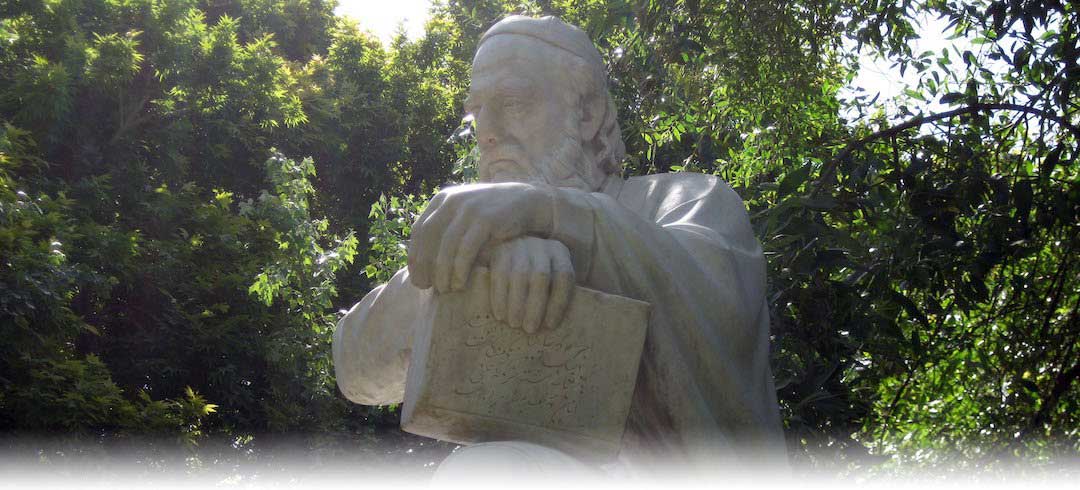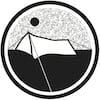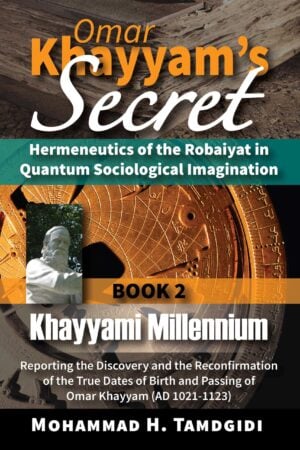Book Section: BACKMATTER — Including the Conclusion to “Omar Khayyam’s Secret” Series: Book 3: Khayyami Astronomy — by Mohammad H. Tamdgidi
$20.00
This book section includes the conclusion to and the back matter for Omar Khayyam’s Secret: Hermeneutics of the Robaiyat in Quantum Sociological Imagination: Book 3: Khayyami Astronomy: How Omar Khayyam’s Newly Discovered True Birth Date Horoscope Reveals the Origins of His Pen Name and Independently Confirms His Authorship of the Robaiyat, authored by Mohammad H. Tamdgidi.
Description
Abstract
This book section includes the conclusion to and the back matter for Omar Khayyam’s Secret: Hermeneutics of the Robaiyat in Quantum Sociological Imagination: Book 3: Khayyami Astronomy: How Omar Khayyam’s Newly Discovered True Birth Date Horoscope Reveals the Origins of His Pen Name and Independently Confirms His Authorship of the Robaiyat, authored by Mohammad H. Tamdgidi.
The essay, titled “Conclusion to Book 3: Summary of Findings,” serves as the conclusion to the book Khayyami Astronomy: How the Newly Discovered True Birth Horoscope of Omar Khayyam Reveals the Origins of His Pen Name and Independently Confirms His Authorship of the Robaiyat, which is the third volume of the twelve-book series Omar Khayyam’s Secret: Hermeneutics of the Robaiyat in Quantum Sociological Imagination, authored by Mohammad H. Tamdgidi. This third book of the series was devoted to a close examination of Omar Khayyam’s newly discovered true birth date horoscope, and what information its hermeneutic study can offer for understanding Khayyam’s life and works, especially the origin, nature, and the purpose of his Robaiyat.
The essay, titled “Book 3 Preface: Recap From Prior Books of the Series,” served to offer a summary of prior books of the series. And the essay, “Introduction to Book 3: The Hermeneutic Significance of Omar Khayyam’s Newly Discovered True Birth Horoscope,” posed the central question to be explore in this third book: Is there more to Khayyam’s horoscope?
In the first chapter, titled “Was Omar Khayyam’s Birth Horoscope Intended Just to Offer a Birth Date Or Was It An Astrological Bread Crumb?” Tamdgidi began by asking, “If the main purpose of Khayyam’s horoscope was simply to offer a date of birth, why not just do that, and offer a date of birth?” After all, the effort in turning the study of Khayyam’s horoscope from one of simply offering a birth date to offering anything more depends on asking first why would Khayyam adopt such a strategy of sharing a piece of information about his birth date.
The purpose of the second chapter, titled “Considering Both the Stated and the Silent Features of Omar Khayyam’s True Birth Date Horoscope,” was to explain technically the astrological features of Khayyam’s true birth date chart. The author’s aim was not yet to interpret the features, but to establish the basic facts of the configuration of “planets” and their aspectations as found in Khayyam’s birth chart. He offered an overview of the purpose of astrological analysis and presented the basic aspectations of Khayyam’s horoscope, pointing out how some of such aspectations are stated and some remain silent in his reported horoscope.
Considering Khayyam’s natal chart as a whole as far as Trines and Triplicities are concerned, with the seven known planets at the time, and the AS and MC points included, we have a total of 16 Trines, and a dense group of 9 Triplicities, all of which share, or are tied, or fastened, in one single vertex, the Sun/Mercury Samimi (Cazimi) point which happens to share the same degree 18 of Gemini of the Ascendant. All of these Triplicities are of the Air type, meaning that all their points fall in the triad Gemini, Aquarius, and Libra, representing all qualities of Air in astrological terms (mutable, fixed, and cardinal, respectively).
There are also three Sextiles (which are semi-Trines, in Persian/Arabic called “Tasdees” or تسديس) between Venus on one hand and Moon, North Node and MC on the other, given the distances involved fall within about 60 degrees (sixth of 360 degrees) range; a semi-Trine, or Trine “by effort” rather than “naturally predisposed,” denotes when an implied attribute is naturally embedded but must be evoked by conscious and intentional effort rather than existing and arising habitually and naturally, as astrologists interpret the matter. We also have an Inconjunct between Moon and Jupiter, two Oppositions between the South Node on one hand and the Moon and North Node on the other. There are no squares, as far as the seven-planet natal chart for Khayyam as known to him is concerned.
In the third chapter, titled “Features of Omar Khayyam’s Horoscope as a Whole Based on Astrological House And Other Definitions Traditionally Held in His Own Time,” Tamdgidi presented Table III.1 as an important and central heuristic device for furthering the purpose of the hermeneutic analysis in third and following chapters as a whole.
Since this third book aimed at conducting its hermeneutic analysis within a traditional/medieval (not modern) astrological environment, details that followed, as also partly given in the Table III.1 that was introduced in the chapter, were intended to fall within that system of interpretation as cross-checked with the definitions given in the above two main works by Shahmardan Razi and Abu Reyhan Biruni, beside consultation of other online sources.
In the fourth chapter, titled “Hermeneutically Interpreting Omar Khayyam’s Horoscope: Discovering the Origins of His Pen Name,” Tamdgidi offered a hermeneutic interpretation of Omar Khayyam’s horoscope as a whole based on both its originally stated and its silent features as presented in Table III.1 in the previous chapter.
He found, based on the study reported in the chapter, that we can definitively offer and consider the alternative, indeed textually reliable, new story that “Khayyam” was not an inherited, but an adopted, pen name—that the pen name has its origins in his horoscope, his natal chart, being comprised of an incredible array of Triplicities (or Grand Trines) as grand tents, being continually “stitched” by a Sun-Mercury-Ascendant conjuncting vertex. The study also led him to also conclude that the planet Venus plays a key and central role in Khayyam’s chart.
In the fifth chapter, titled “Discovering the Signature Robai of Omar Khayyam, Leading to An Independent and Final Confirmation of His Authorship of the Robaiyat,” and two more chapters to follow, Tamdgidi aimed to intersect the findings of this book and series, so far, with a few selections from Khayyami quatrains. His claim was that the Khayyami quatrain he called “Mid-Gemini Dot” is one indisputably composed by Omar Khayyam, the discovery having an enormous significance for Khayyami studies, the like of which has never been noticed before.
In the sixth chapter, titled “The Case of A Second Signature Robai of Omar Khayyam, Reporting Its Author to Have Turned A Centenarian,” Tamdgidi also reported that there is a second quatrain, one he called “Hundred Years Test,” in both its close versions are from the same poet, Omar Khayyam, the variation having existed perhaps in the original notes in one version or another.
In the seventh chapter, titled “Tentatively Intersecting the Findings with A Few More Khayyami Quatrains,” the author intersected the findings of his studies so far with just a few (fifty) more of Khayyami quatrains. His purpose was not to argue for or against any quatrain as being authentically attributable to our historical Omar Khayyam. To do so, he noted, we must await the findings of further studies, in subsequent books of this series, of other philosophical, religious, scientific, and literary writings more or less authentically attributed to Khayyam. He concluded that the poet of Khayyami quatrains definitively intended the poems to remain in veil, that they were considered to be a collection of interrelated quatrains and not sporadic separate quatrains written marginally in pastime, that they were meant to offer a “life story” as in a “book of life,” that the poems’ critically nuanced engagement with astrology was not incidental but essential throughout the collection, and that, judging from the signature quatrain discovered, 1000 quatrains were intended to comprise the collection.
In the eighth and last chapter, titled “Khayyami Astronomy and the ‘Khayyami Code’: Hermeneutically Understanding Omar Khayyam’s Attitude Toward Astrology and His Own Horoscope,” having learned in the course of research in this series the extent to which Khayyam’s precisely, yet partially, stated horoscope has served to reveal key important details about his life—including his dates of birth, narrowing the margin for his dates of passing, the origins of his pen name and his authorship of the Robaiyat—Tamdgidi noted how he began to doubt whether it is at all possible to conduct our Khayyami studies from a hermeneutic point of view, and therefore to understand Khayyam and his works, even and especially the Khayyami Robaiyat, without giving due attention, in fact a central one, to critical astrological insights as a cultural belief-system still prevalent in Khayyam’s time.
Recommended Citation
Tamdgidi, Mohammad H. 2021. “BACKMATTER — Including the Conclusion to “Omar Khayyam’s Secret” Series: Book 3: Khayyami Astronomy.” Pp. 317-374 in Omar Khayyam’s Secret: Hermeneutics of the Robaiyat in Quantum Sociological Imagination: Book 3: Khayyami Astronomy: How Omar Khayyam’s Newly Discovered True Birth Date Horoscope Reveals the Origins of His Pen Name and Independently Confirms His Authorship of the Robaiyat. (Human Architecture: Journal of the Sociology of Self-Knowledge: Vol. XVI, 2021. Tayyebeh Series in East-West Research and Translation.) Belmont, MA: Okcir Press (an imprint of Ahead Publishing House).
Where to Purchase Complete Book: The various editions of the volume of which this Book Section is a part can be ordered from the Okcir Store and all major online bookstores worldwide (such as Amazon, Barnes&Noble, Google Play, and others).
Read the Above Publication Online
To read the above publication online, you need to be logged in as an OKCIR Library member with a valid access. In that case just click on the large PDF icon below to access the publication. Make sure you refresh your browser page after logging in.








